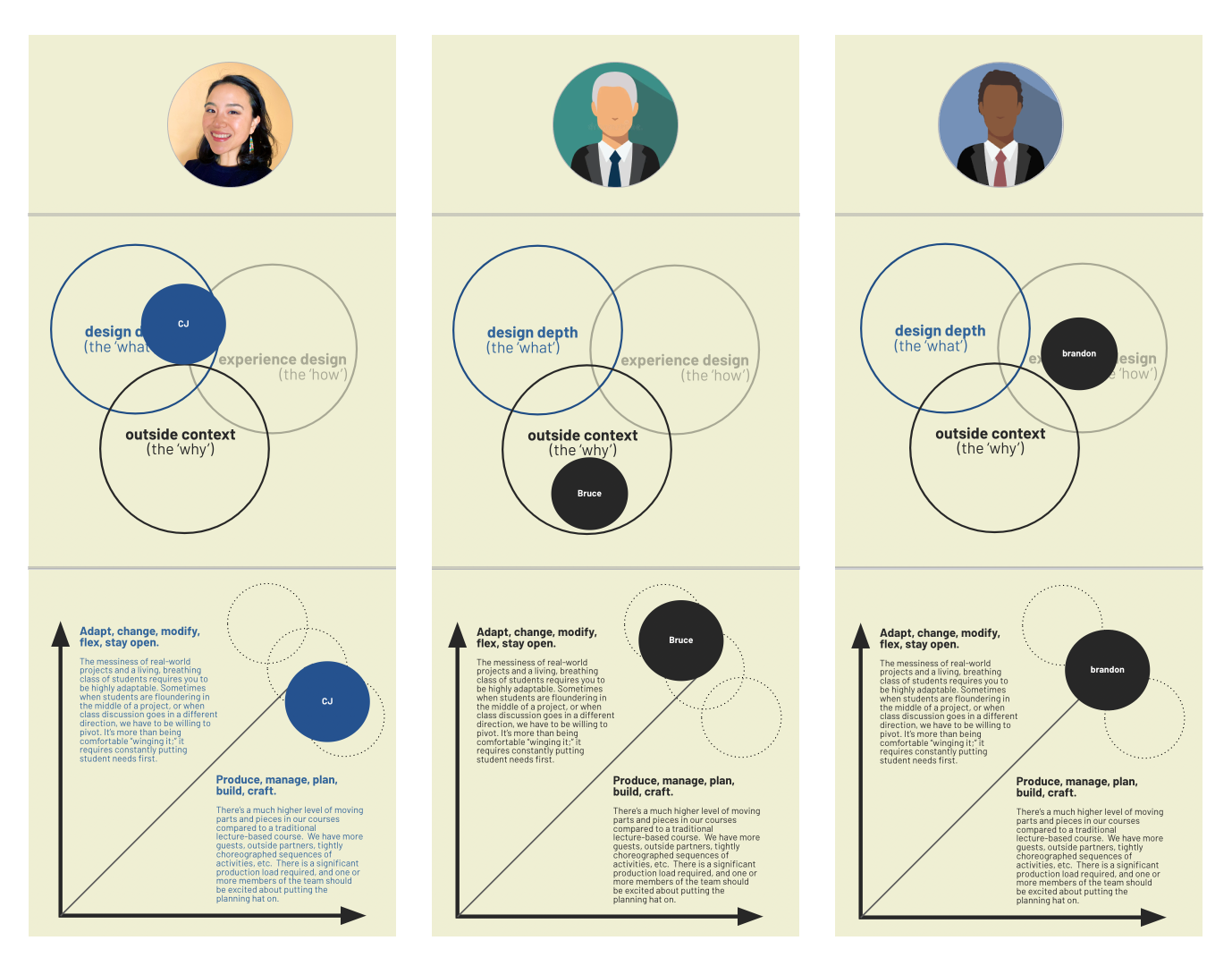
Introduction
In Spring 2022, after taking Redesigning Finance as a student when it was a pop-up and advising as a Student Coach when it was a new class, I was approached to instruct it this year as a Lecturer.
In its 5th year, the teaching team of Redesigning Finance chose to pursue a new topic: Small Business Lending, specifically for entrepreneurs of color. As the Senior UX Design Manager of Lending Innovation at Silicon Valley Bank, this finance topic for this population was and is near and dear to my heart. That said, historically Redesigning Finance at d.School taught a very different kind of finance.
Building new content with a new teaching team was certainly not going to be a walk in the park.
Getting Started:
Team Formation
My first goal was to understand how to work within my new team. By leveraging the self-assessment materials that each of us had provided in the course proposal application, we were able to ask each other and answer the following questions:
How can we celebrate each others’ zones of excellence?
How can we support each others’ blind spots?
Getting Started:
Curriculum
This year’s Redesigning Finance curriculum involved multiple stakeholders and sponsors:
Apple - Apple Lines of Businesses were interested in increasing the diversity of their approved vendors
Silicon Valley Bank - SVB was interested in banking and lending to the next generation of founders and entrepreneurs
Community College - Community College brought in a diverse community of entrepreneurs and badass business folks beyond Stanford’s walls
The challenge was to put together a course cadence that included teaching design thinking at an introductory level, invite guest speakers to share their view point, and connect students to participants to be interviewed for the course projects. Fitting everything into 10-weeks was quite the feat!
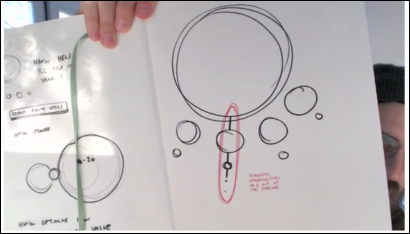
Early-Stage: A conceptual diagram trying to right-size the course project
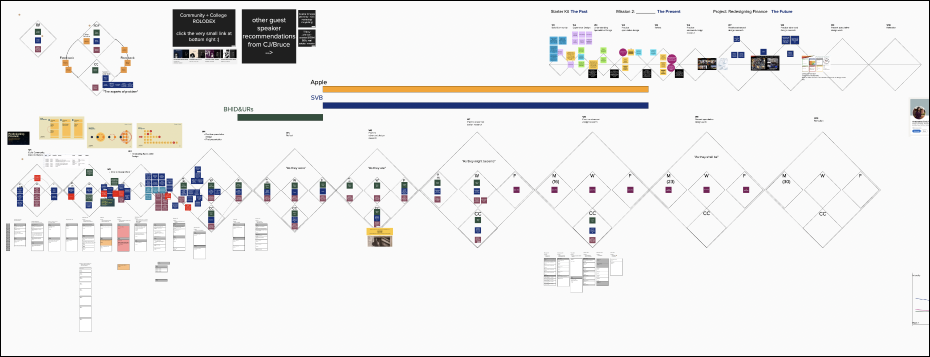
Early-Stage: The start of the 10-week course map
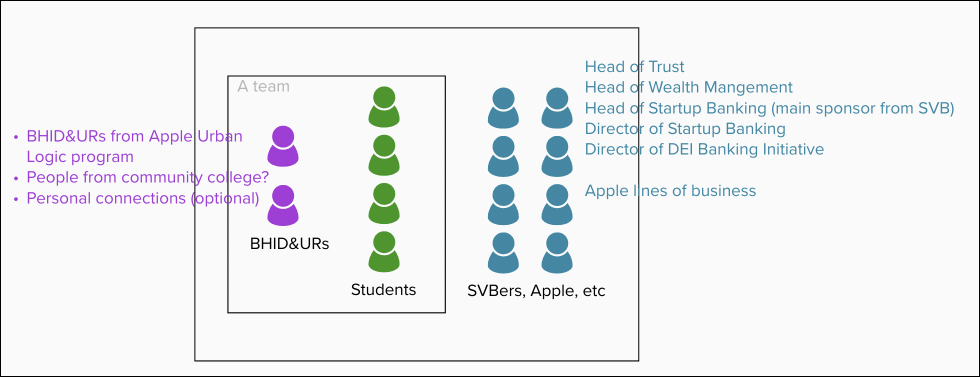
Early-Stage: How design groups might be formed to optimize participatory design
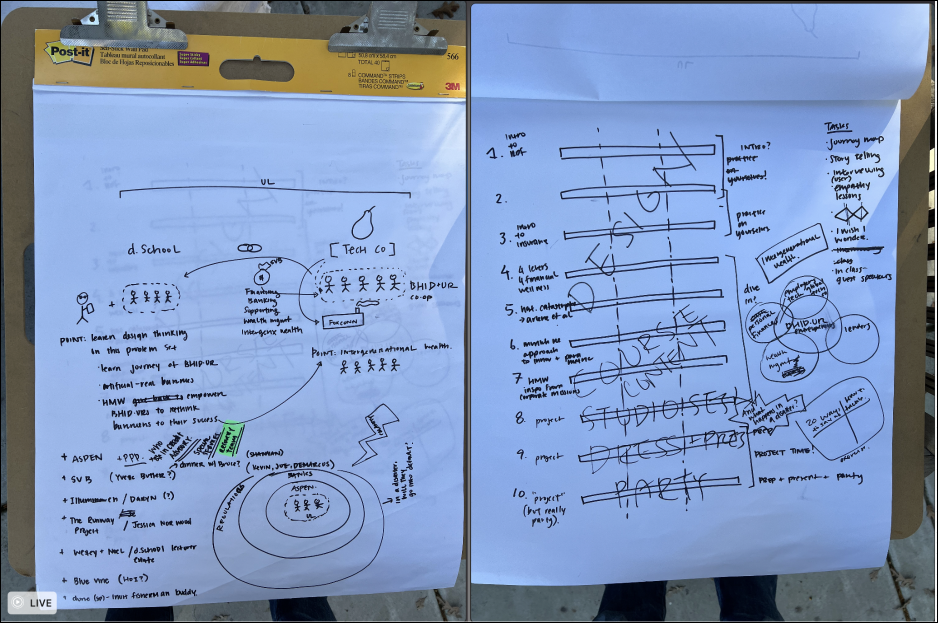
Early-Stage: notes on the course structure
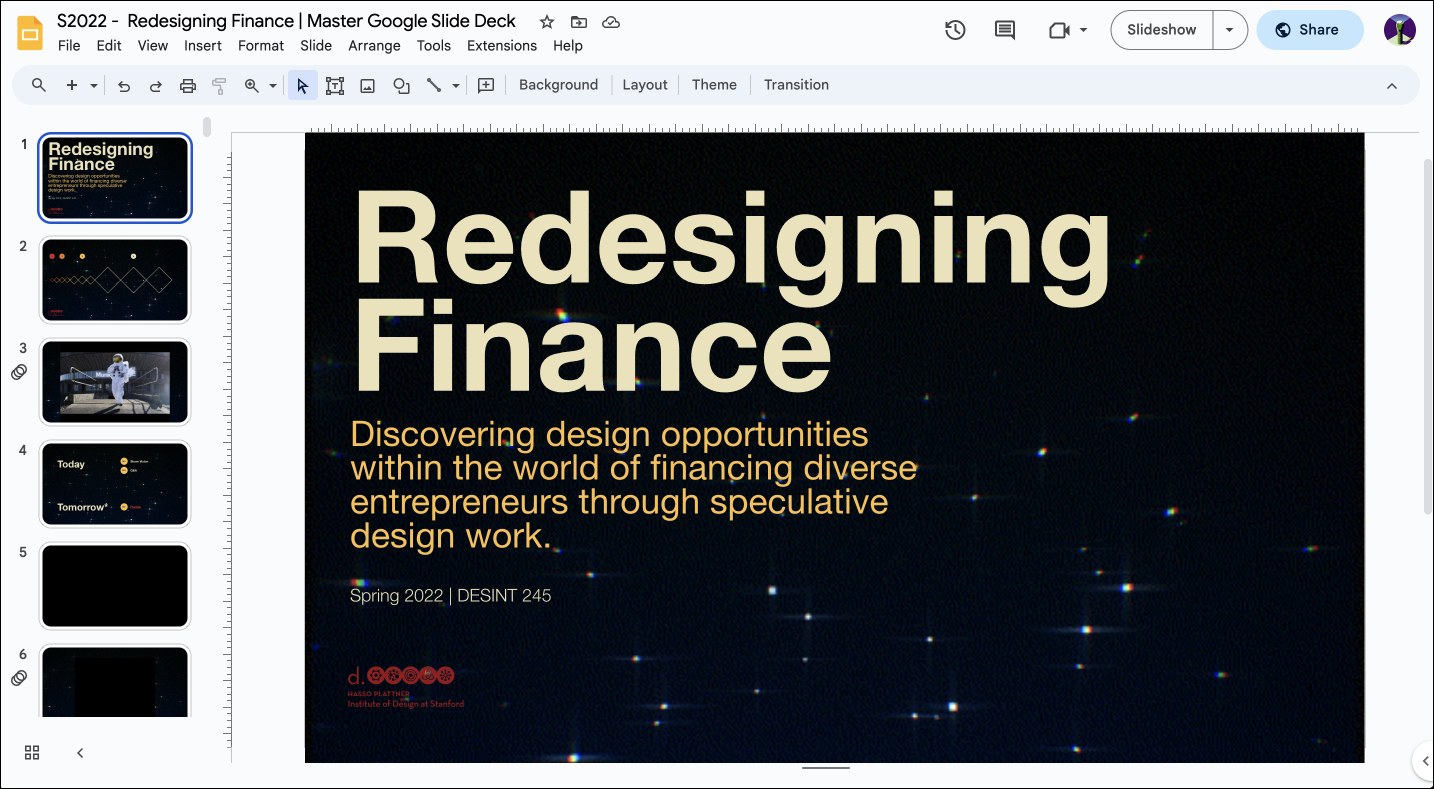
Later-Stage: A parent deck in Google Slides for all course lecture slides

Later-Stage: A minute-by-minute schedule for each class
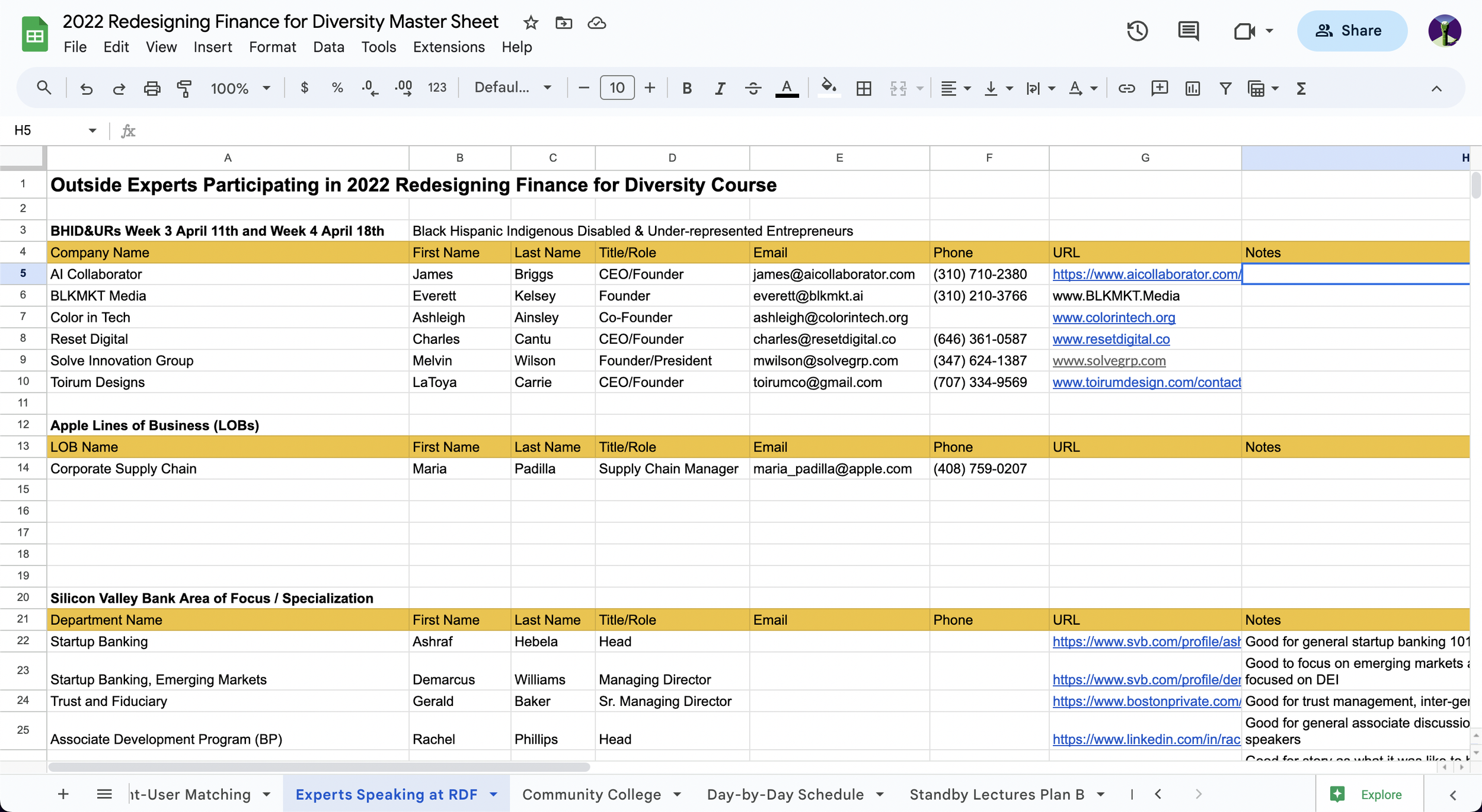
Later-Stage: A parent spreadsheet with contact information and confirmed dates for all guest speakers

Later-Stage: A parent spreadsheet with links to all resources for the course
What We Did
In 10-weeks, we were able to:
Teach design starting with the online Starter Kit
Have 4 student teams practice their interviewing skills with 2-4 entrepreneurs of color
Have students present their finals to directors of Apple and Silicon Valley Bank

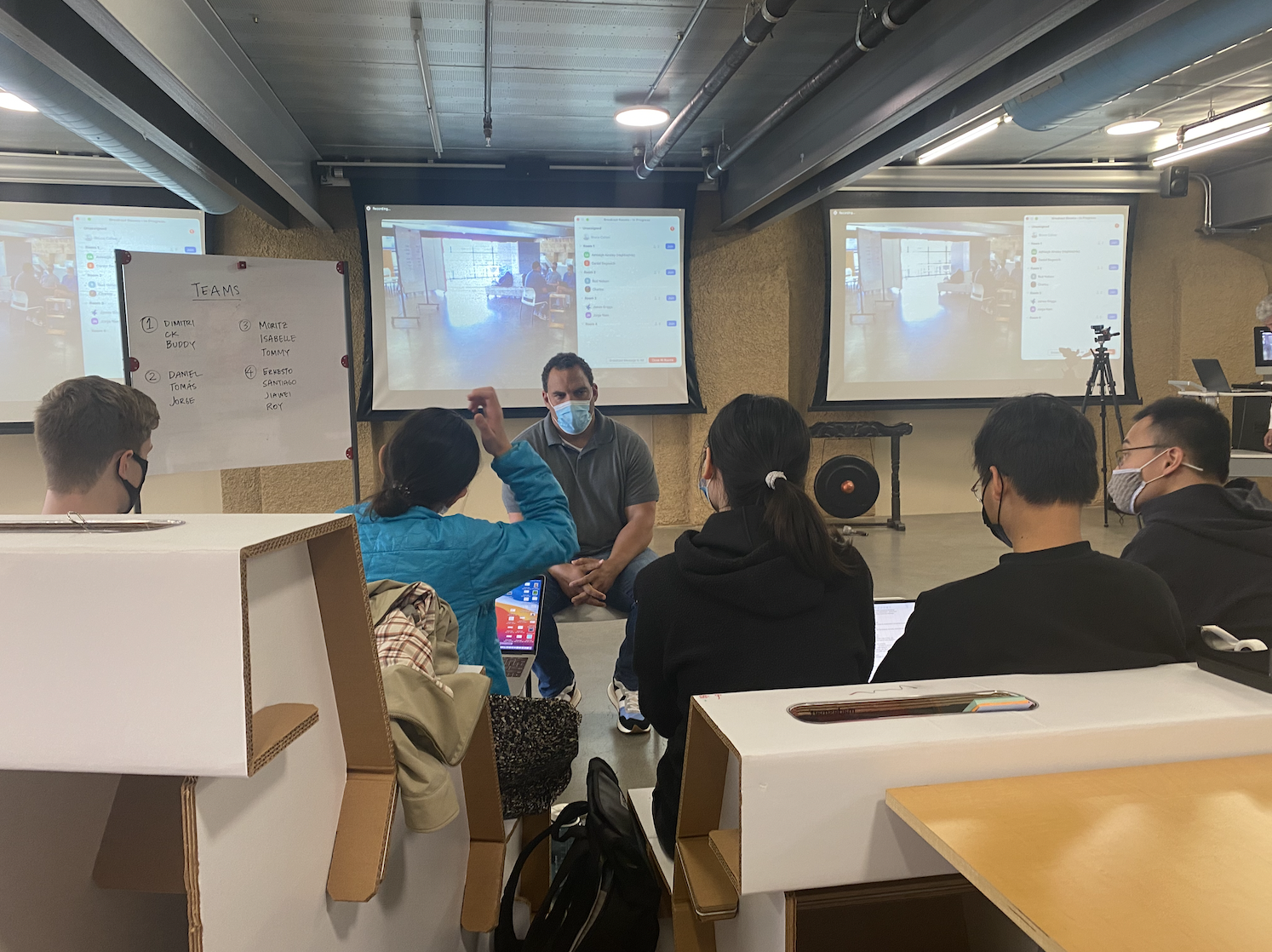
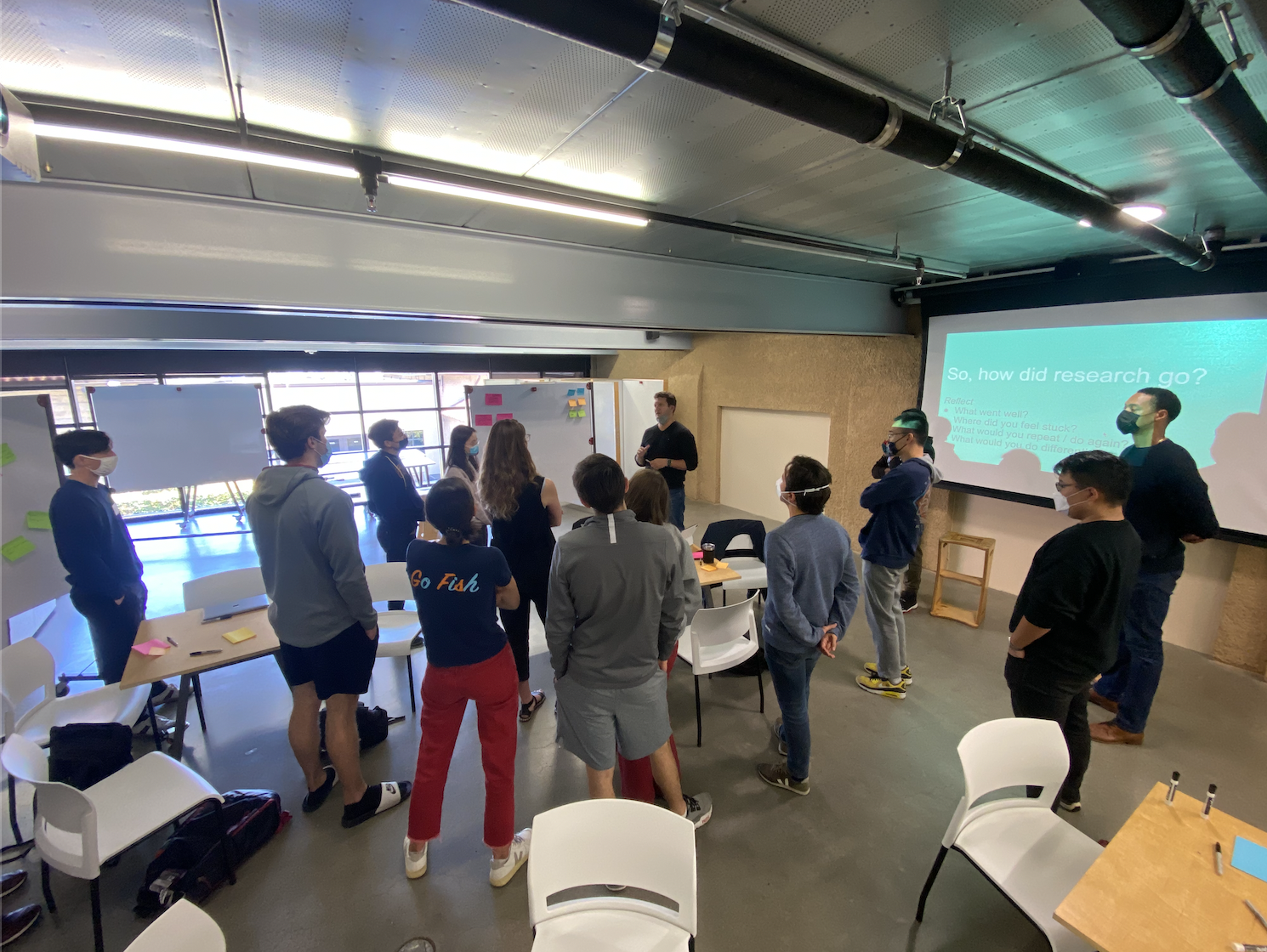
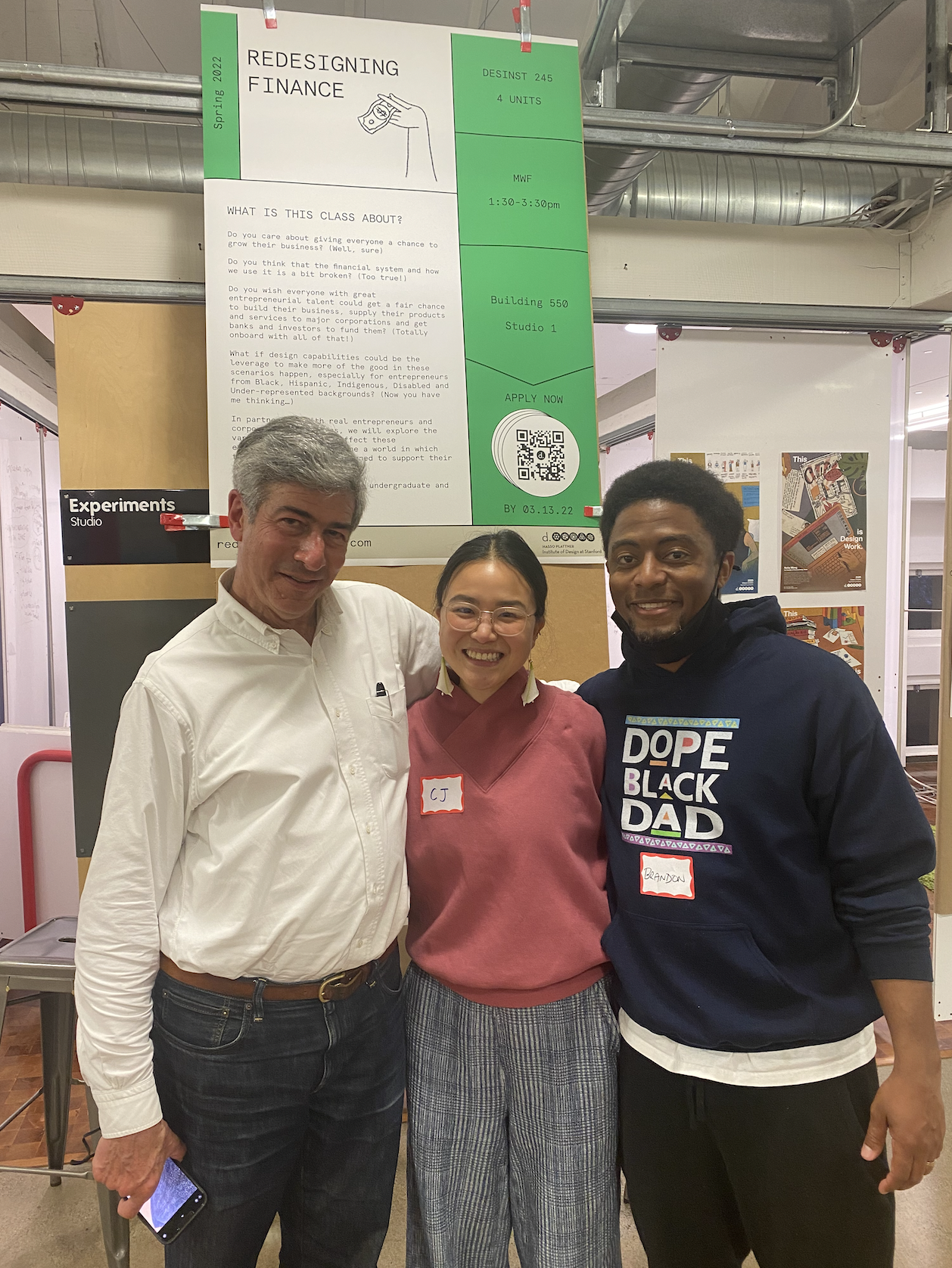
Lessons Learned
Focus the class ah-ha’s on 1-2 lessons, tighten the ambiguity on everything else
In order to offer students epiphany moments in class, the areas of exploration / divergence / ambiguity need to be fenced in. There were moments in class when it felt like we were diverging on EVERYTHING - the assignment was undefined, the class time was all “yes and”, and the students didn’t seem to have a handle on where to go. Understanding when to diverge and when to converge was key in pulling off this class. For instance, in the end, I created a template for final presentations so that the students could continue focusing on refining their prototypes.
Weave in course content earlier on
For the first 2 weeks, I only focused on the “design” in Redesigning Finance. While the class was able to get through the Starter Kit “on time”, the feedback I received at the end of class was that the students felt lost and wished that the Starter Kit included content on banking and finance. A future version of design thinking 101 might include topics around money (i.e., design constraints can be about money, the day-in-the-life journey mapping might include a finance topic)


